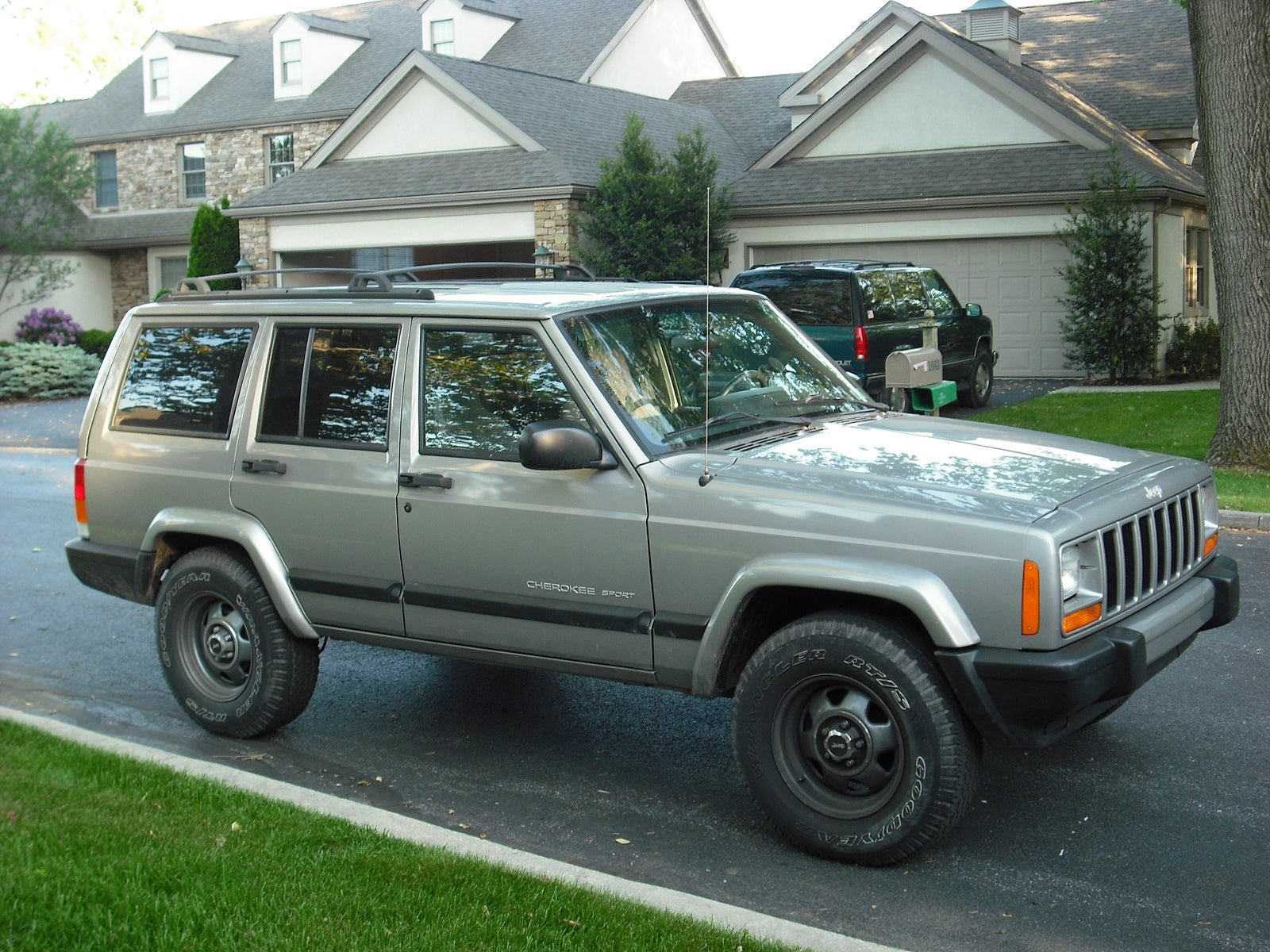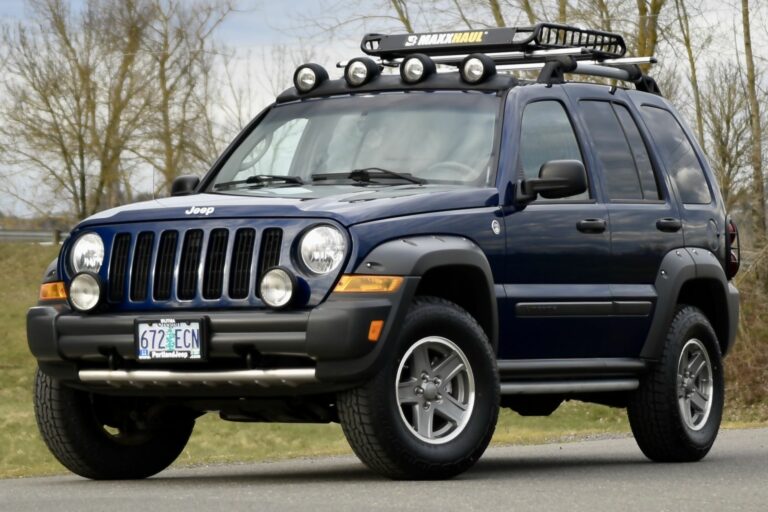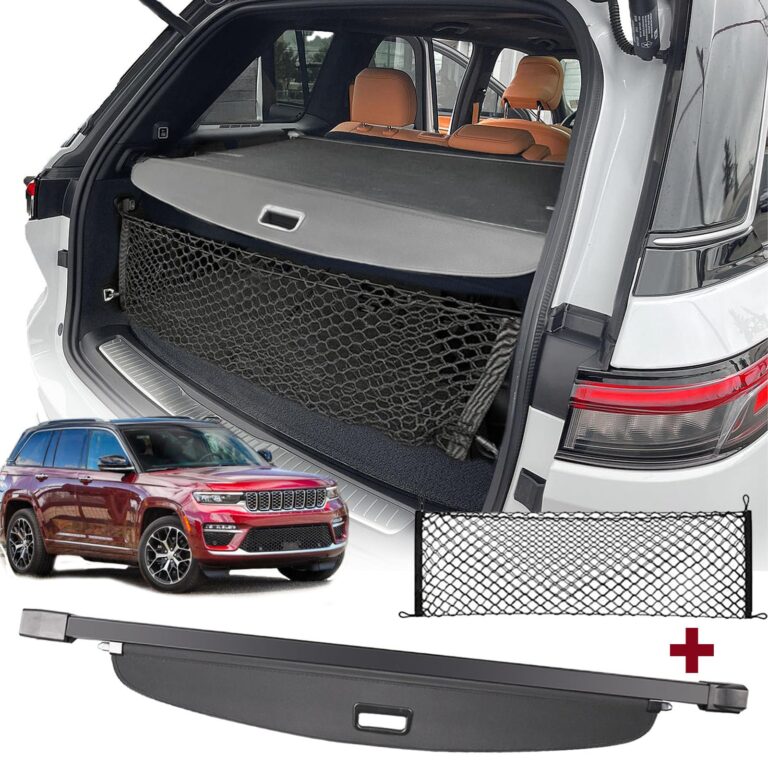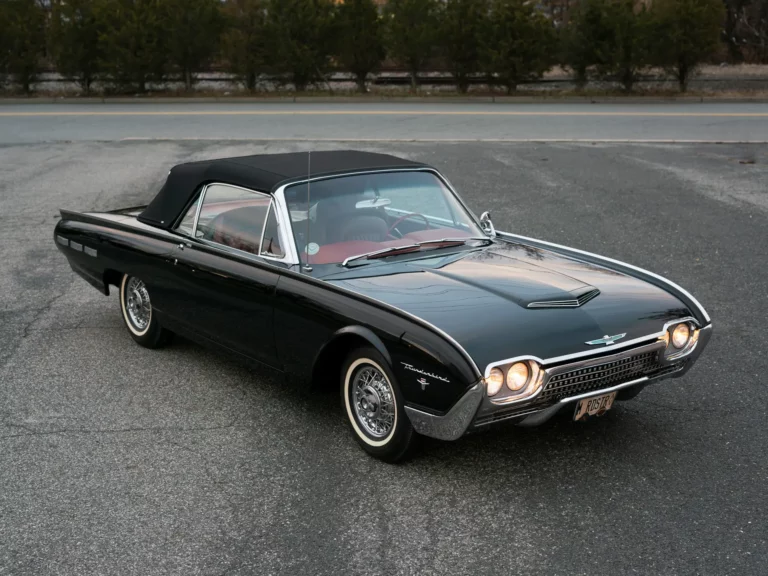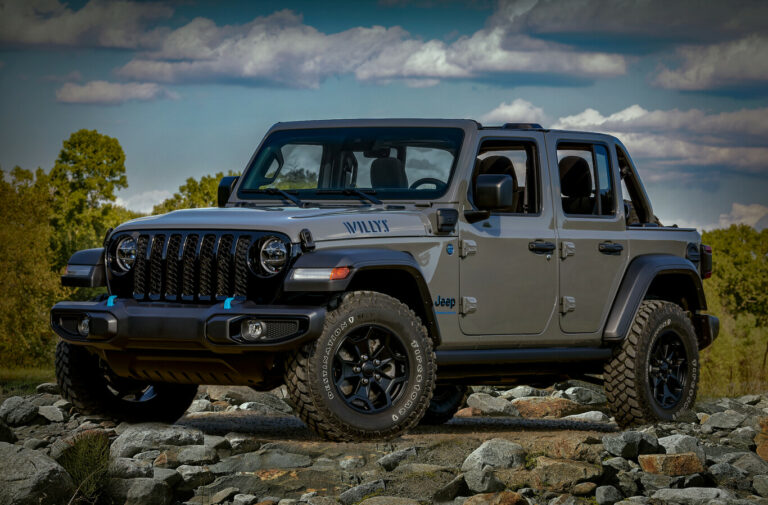2001 Jeep Cherokee Sport: A Comprehensive Guide to an Enduring Icon
2001 Jeep Cherokee Sport: A Comprehensive Guide to an Enduring Icon jeeps.truckstrend.com
The year 2001 marked a significant point in automotive history for enthusiasts of rugged utility vehicles: it was the final production year for the legendary Jeep Cherokee (XJ generation). Among its various trims, the 2001 Jeep Cherokee Sport stood out as a quintessential representation of everything that made the XJ an enduring icon. Stripped down, purposeful, and immensely capable, the Sport trim embodied the no-nonsense philosophy that endeared the Cherokee to millions. This article delves deep into what makes the 2001 Jeep Cherokee Sport not just a classic, but a highly sought-after vehicle even today, offering a comprehensive guide for anyone looking to understand, acquire, or maintain this off-road legend.
The End of an Era: What Makes the 2001 XJ Special?
2001 Jeep Cherokee Sport: A Comprehensive Guide to an Enduring Icon
The 2001 Jeep Cherokee Sport holds a unique place as the swansong of a groundbreaking vehicle lineage. Introduced in 1984, the XJ Cherokee pioneered the modern SUV with its unibody construction, offering a lighter, more car-like ride than traditional body-on-frame SUVs, without sacrificing off-road prowess. By 2001, the XJ had undergone various refinements, but its core identity remained intact.
Being the final year, the 2001 models benefited from years of iterative improvements, often seen as the most refined versions of the XJ. They retained the robust simplicity that enthusiasts loved, avoiding the increasing complexity of later generations. Its unibody chassis, integrated frame rails, and solid front and rear axles (Dana 30 front, Chrysler 8.25 or Dana 35 rear) provided an unparalleled combination of durability, articulation, and ease of modification. The Sport trim, in particular, often came with fewer luxury features, making it lighter and, arguably, even more dedicated to its utilitarian purpose. This simplicity is a key factor in its enduring popularity, as it translates to easier maintenance and repair for the DIY enthusiast.
Powertrain and Performance: The Legendary 4.0L I6
At the heart of every 2001 Jeep Cherokee Sport lies the legendary 4.0-liter "PowerTech" inline-six engine. This engine is arguably the single biggest reason for the XJ’s reputation for reliability and longevity.
- Engine (4.0L PowerTech I6): Renowned for its torquey nature and bulletproof reliability, the 4.0L inline-six produced 190 horsepower and 225 lb-ft of torque in its final iteration. Its long stroke design delivers power smoothly across the RPM range, making it excellent for both highway cruising and low-speed off-road crawling. While not a powerhouse by modern standards, its robust construction and simple design mean it can often run for hundreds of thousands of miles with proper maintenance. Common issues are well-documented and easily remedied, further contributing to its legendary status.
- Transmissions:
- AW4 Automatic: The vast majority of 2001 Cherokee Sports came equipped with the Aisin-Warner AW4 4-speed automatic transmission. This unit is celebrated for its incredible durability and smooth, predictable shifts. It’s a workhorse that rarely gives trouble, even under heavy off-road use, and is highly regarded in the off-road community.
- NV3550 Manual: While rare, a small number of 2001 XJs, including some Sport models, were available with the New Venture NV3550 5-speed manual transmission. This option appeals to purists seeking maximum control and engagement, though finding one can be a challenge.

- Transfer Cases:
- Command-Trac (NP231): The standard transfer case for the Sport trim was the NP231 Command-Trac. This part-time 4WD system offers 2WD, 4-High Part-Time, and 4-Low. It’s incredibly robust and ideal for off-road use, but should not be used on dry pavement in 4WD modes.
- Selec-Trac (NP242): Less common on Sport trims but occasionally found, the NP242 Selec-Trac transfer case provided an added benefit: a full-time 4WD mode (4-High Full-Time) that could be used on any surface, including dry pavement. This made it more versatile for varying weather conditions.

- Axles: Most 2001 Cherokee Sports came with a Dana 30 front axle and either a Chrysler 8.25 or a Dana 35 rear axle. The Chrysler 8.25 is generally preferred for its strength over the Dana 35, especially if planning larger tires or heavy off-road use.
This combination of reliable powertrain components makes the 2001 Jeep Cherokee Sport an exceptionally capable vehicle, whether navigating urban jungles or tackling challenging trails.
Design and Interior: Form Meets Function
The design of the 2001 Jeep Cherokee Sport is a testament to the "less is more" philosophy.
- Exterior: The XJ’s exterior is instantly recognizable for its boxy, upright, and utilitarian design. The Sport trim typically featured black body side moldings, black door handles, and black bumpers, contributing to its rugged aesthetic. While other trims might have had more chrome or body-colored accents, the Sport embraced a no-frills, ready-for-anything look. Its compact dimensions make it surprisingly maneuverable in tight spaces, while its excellent approach and departure angles contribute to its off-road prowess. The timeless design ensures it still looks relevant and cool today.
- Interior: Inside, the 2001 Cherokee Sport prioritizes functionality over luxury. The dashboard is straightforward, with clear, easy-to-read gauges and logically placed controls. Materials are durable, designed to withstand years of use and abuse, rather than coddle occupants with soft-touch plastics. Seating is comfortable for four adults, though five can fit for shorter journeys. Cargo space is generous for its size, especially with the rear seats folded down, making it a practical choice for hauling gear, camping equipment, or even building supplies. While it lacks modern amenities like touchscreens, Bluetooth connectivity (though easily added via aftermarket solutions), or advanced climate control, its simplicity means fewer things to break and easier repairs. Power windows, locks, and mirrors were common, but automatic climate control or heated seats were rare or non-existent in the Sport trim.
Owning a 2001 Jeep Cherokee Sport Today: Practical Considerations
Acquiring and owning a 2001 Jeep Cherokee Sport in the modern era comes with its unique set of benefits and challenges.
Benefits:
- Reliability & Repairability: The 4.0L engine and AW4 transmission are legendary for their durability. When issues do arise, parts are readily available and generally inexpensive, and the vehicle’s simple design makes it relatively easy for DIY mechanics to work on.
- Aftermarket Support: Few vehicles boast the aftermarket support of the XJ Cherokee. From lift kits and heavy-duty bumpers to suspension components and interior upgrades, virtually any modification you can imagine is available.
- Off-Road Prowess: Stock, the XJ is a highly capable off-roader. With modest modifications, it can tackle incredibly challenging terrain, often outperforming much more expensive and complex modern SUVs.
- Timeless Appeal: The XJ’s classic, rugged aesthetic has only grown in popularity, making it a head-turner and a conversation starter.
- Cost-Effectiveness: Initial purchase prices are relatively low, and maintenance costs are manageable, making it an accessible entry point into the world of capable 4x4s.
Challenges:
- Rust: The unibody construction, while innovative, is susceptible to rust, particularly in northern climates where salt is used on roads. Critical areas include the frame rails, floor pans, and rocker panels. Thorough inspection for rust is paramount before purchase.
- Age-Related Wear: Even the most reliable components eventually wear out. Expect to replace suspension bushings, ball joints, steering components, and various sensors (like the Crank Position Sensor) due to age.
- Fuel Economy: The 4.0L engine, while robust, is not fuel-efficient by modern standards. Expect around 15-18 MPG combined, depending on driving style and modifications.
- Safety Features: As a vehicle from the early 2000s, the XJ lacks modern safety features like multiple airbags, ABS (often optional and sometimes problematic), stability control, or collision avoidance systems.
- Comfort & Noise: The ride can be firm, and road noise is noticeable, especially compared to contemporary vehicles.
Maintenance Tips:
- Rust Prevention: If you acquire a rust-free example, protect it! Undercoating and regular washing are crucial. If there’s surface rust, address it promptly.
- Fluid Changes: Regular oil changes (every 3,000-5,000 miles), transmission fluid flushes, transfer case, and differential fluid changes are vital for longevity.
- Cooling System: The 4.0L engine can run hot. Keep the cooling system in top shape: flush coolant regularly, inspect hoses, water pump, and radiator.
- Crank Position Sensor (CPS): This is a common failure point that can cause stalling or no-starts. It’s a relatively inexpensive part to replace, but can leave you stranded.
- Inspect Suspension & Steering: Due to their off-road use, frequently check ball joints, tie rod ends, control arm bushings, and shocks for wear.
Modifications and Upgrades:
For many owners, the XJ Cherokee is a canvas for customization. Common modifications include:
- Lift Kits: Ranging from mild 2-inch lifts for tire clearance to extreme 6+ inch lifts for serious off-roading.
- Larger Tires: To improve ground clearance and traction.
- Aftermarket Bumpers & Armor: For protection and recovery points.
- Engine & Drivetrain: Swapping in stronger axles, lockers, or regearing for larger tires.
- Interior Upgrades: Adding modern stereo systems, improved seating, or storage solutions.
Is the 2001 Cherokee Sport Right for You?
The 2001 Jeep Cherokee Sport is not for everyone, but for the right individual, it’s an unparalleled choice.
- It’s ideal for: Off-road enthusiasts, weekend adventurers, DIY mechanics, those seeking a reliable and straightforward utility vehicle, or anyone who appreciates classic automotive design and rugged capability. Its relatively low cost of entry makes it a great first project vehicle for aspiring off-roaders.
- It might not be ideal for: Those prioritizing modern creature comforts, advanced safety features, excellent fuel economy, or a whisper-quiet, smooth ride. If you prefer a vehicle that handles everything for you and requires minimal hands-on maintenance, a newer SUV might be a better fit.
2001 Jeep Cherokee Sport Estimated Price Guide
The price of a 2001 Jeep Cherokee Sport can vary significantly based on condition, mileage, maintenance history, and modifications. This table provides a general estimate.
| Condition Category | Estimated Price Range (USD) | Key Factors Influencing Price |
|---|---|---|
| Fair/Driver Quality | $3,000 – $6,000 | High mileage, noticeable rust, some mechanical issues, worn interior. Still runs and drives, but needs work. |
| Good/Solid Driver | $6,000 – $9,000 | Moderate mileage, minimal rust, well-maintained mechanically, clean interior with minor wear. Ready to drive. |
| Excellent/Well-Preserved | $9,000 – $14,000+ | Low mileage, minimal to no rust, meticulous maintenance records, pristine interior/exterior. Often garage-kept. |
| Highly Modified/Restored | $10,000 – $20,000+ | Significant aftermarket upgrades (lifts, axles, bumpers, etc.), professional restoration work, specialized builds. Price highly dependent on quality of mods. |
Note: Prices are estimates and can fluctuate based on regional market demand, economic conditions, and the specific history of the individual vehicle. Always inspect a vehicle thoroughly or have it inspected by a trusted mechanic before purchase.
Frequently Asked Questions (FAQ) about the 2001 Jeep Cherokee Sport
Q: Is the 2001 Jeep Cherokee Sport reliable?
A: Yes, it is widely considered one of the most reliable SUVs ever made, primarily due to its legendary 4.0L inline-six engine and AW4 automatic transmission. Proper maintenance is key to its longevity.
Q: What’s the fuel economy like?
A: Not great by modern standards. Expect around 15-18 miles per gallon (MPG) combined, depending on driving habits, terrain, and whether the vehicle has been modified with larger tires or lift kits.
Q: What are the most common issues to look out for?
A: The most common issues are rust (especially unibody frame rails, rocker panels, and floorboards), age-related wear on suspension components (bushings, ball joints), and occasional electrical gremlins (like the Crank Position Sensor).
Q: Is it good for off-roading?
A: Absolutely. Even in stock form, the 2001 Cherokee Sport is exceptionally capable off-road due to its solid axles, generous ground clearance, and robust 4WD system. With aftermarket modifications, its off-road performance can rival or exceed much more expensive vehicles.
Q: Can I daily drive a 2001 Jeep Cherokee Sport?
A: Yes, many people daily drive their XJs. However, be prepared for a less refined ride, more road noise, and lower fuel economy compared to modern vehicles. Its simplicity also means fewer complex systems to fail, making it a reliable daily driver if well-maintained.
Q: What’s the difference between Command-Trac (NP231) and Selec-Trac (NP242) transfer cases?
A: The NP231 Command-Trac is a part-time 4WD system, meaning its 4-High mode should only be used on loose or slippery surfaces (e.g., dirt, snow, ice) to prevent drivetrain binding. The NP242 Selec-Trac offers an additional "4-High Full-Time" mode that can be used on any surface, including dry pavement, making it more versatile for varying road conditions.
Q: Are parts readily available for the 2001 XJ?
A: Yes, parts availability is excellent. Both OEM and aftermarket parts are widely available and generally affordable, making it easy to maintain and repair.
Conclusion
The 2001 Jeep Cherokee Sport stands as a testament to functional design, rugged reliability, and enduring capability. As the last iteration of the iconic XJ generation, it embodies a simplicity and mechanical honesty that resonates deeply with a growing number of enthusiasts. While it may lack the modern creature comforts and advanced safety features of contemporary SUVs, its legendary 4.0L engine, robust drivetrain, and unparalleled aftermarket support make it an incredibly versatile and rewarding vehicle to own. For those who value genuine utility, a hands-on approach to ownership, and a vehicle that can truly take you anywhere, the 2001 Jeep Cherokee Sport isn’t just a classic SUV; it’s a timeless icon that continues to prove its worth, one adventure at a time.
